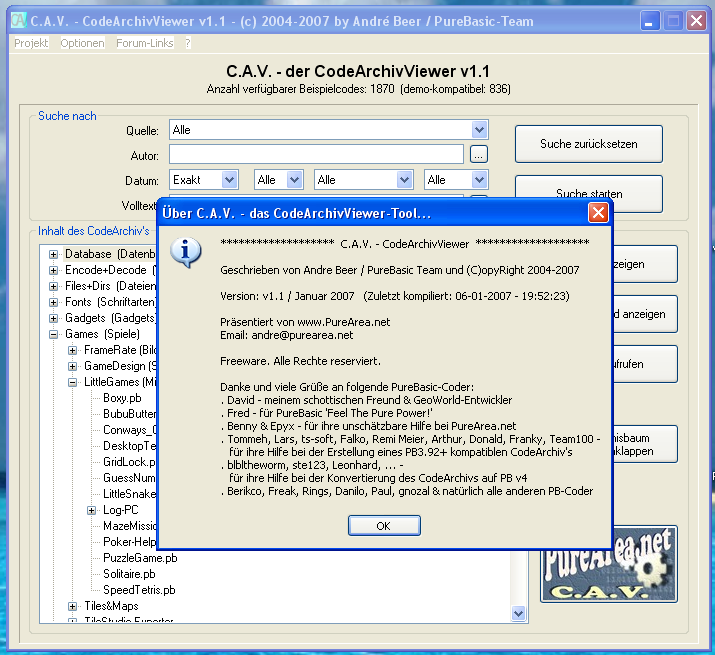

- #Purebasic v4.51 install#
- #Purebasic v4.51 portable#
- #Purebasic v4.51 code#
- #Purebasic v4.51 windows#
#Purebasic v4.51 windows#
#Purebasic v4.51 install#
You need to install two instances of PureBasic though, one for 32 and one for 64 bit.
#Purebasic v4.51 code#

It also supports inline ASM or inline C depending on the backend selected for the compilation.The C backend is a recent addition, and thanks to the GCC compiler you can expect a material gain in execution speed in most cases, especially on 64 bits. It can produce ASM or C code and than compile it using FASM or GCC respectively.
#Purebasic v4.51 portable#
It can be easily used to create portable programs, self-contained in their home directory, not requiring an installer or tampering with the registry.It can create a single EXE, with extremely reduced dependencies (usually only the DLL shipped with the OS unless you use the 3D commands requiring the supplied OGRE DLL).Writing a simple GUI with its gadgets is really easy, and all the gadgets maps to native controls on the various OSes, so they look right.Executables are very small for today's standards and you don't need to ship a runtime library with your program.Unless explicitly stated otherwise these notes are relative to the Windows version, both x86 and 圆4, since that's the OS I use most. It's available here: PureBasic on GitHub.Īs any language has its strong and weak points, and most of them are subjective since not everyone need (or like) the same level of power or complexity so what I find important or irrelevant can be very different from what you think.īut beyond my opinions, there is a lot of good information in here, and if you just discovered PureBasic this page can point you in various directions you can explore further and most importantly a lot sooner. It's not really identical on all the platforms but it's reasonably close, so you get an idea of what can be done.Īlso recently the IDE has been made open source! Now you can contribute to the bug fixing or add new features, or simply look the source to learn something from it. The PureBasic's IDE is one good example of a fairly complex cross platform application and it's written in PureBasic. On macOS this requires some acrobatics since Cocoa it's built with Objective C in mind. It's possible to write cross platform programs by just using PB statements and libraries, if you limit yourself to only the common set of commands and libraries available for all the OSes.īut realistically you often need to write at least some platform specific code here and there, using the target OS APIs. It's available for Windows, Linux, macOS and Raspberry. PureBasic is a language, you guessed it, sharing some common ground with a very large family of BASIC dialects. In 2004 I stumbled on PureBasic after using many generations of Visual Studio (Visual Basic and Visual C/C++) and I was hooked by experiencing again, after all those years, a sensation similar to the one TP3.0 gave me in 1986. It was something that really impressed me, computers were not as powerful as today and TP3.0 was a joy to use: everything was immediate and the programming cycle was so effortless it was like using an interpreter magically running at the speed of compiled code. It was written in assembly, it was blazing fast and in less than 40 KB you had a compiler, an editor, a linker and a debugger all loaded in RAM at the same time. While Microsoft was producing its sophisticated but bulky compilers, in 1986 Borland introduced Turbo Pascal 3.0.


 0 kommentar(er)
0 kommentar(er)
